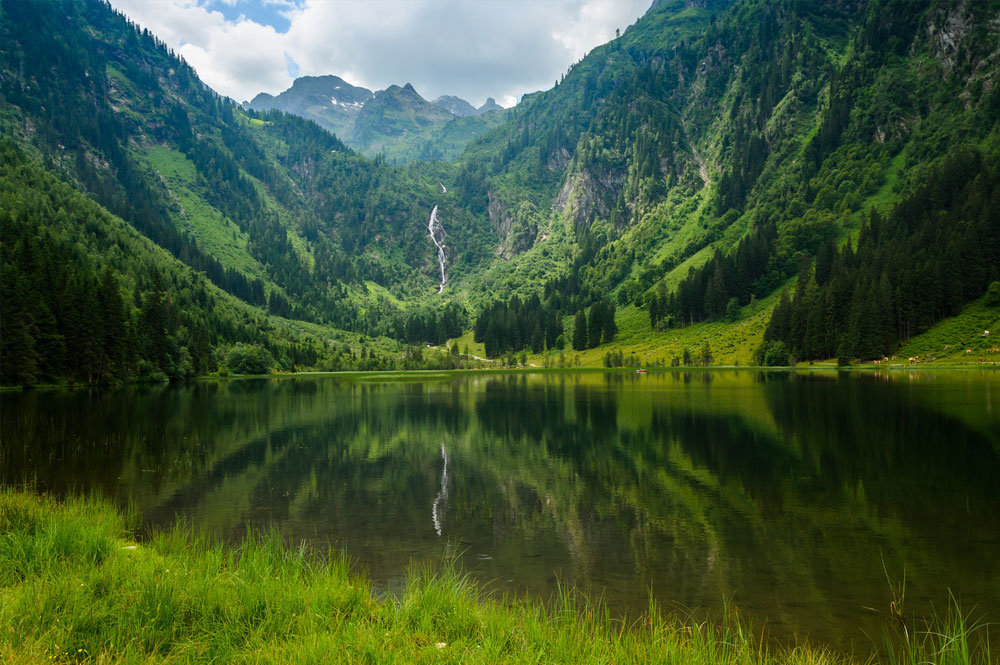7 Tips for Stunning Landscape Photographs

Photo by Einheit 00. CC BY 2.0
Guest article by Daniela Baker
According to National Geographic, the thing that sets great landscape photography apart is that it focuses on exactly the right elements of a landscape. Without realizing it, our human brains and eyes are doing this automatically when we look at a beautiful landscape. We automatically hone in on the best details and let the rest fade way. Unfortunately, a camera doesn’t look at the world like you do, so you have to give it some help so that you can get beautiful landscape photos. Here are some tips to help you do it:
1. Study landscape photos you love
The first thing to do before you set out to take great landscape pictures is to study the works of others that interest you. You don’t need to copy their work, of course, but you can get inspiration. Plus, if you don’t have the opportunity to work directly with seasoned photographers, you can at least see how they make use of foreground, background, focal points, angles, lighting, color, and more so that you know what you might like to replicate in your own photos.
2. Choose a point of interest
Without a point of interest, your viewer’s eye will just wander around the photo, quickly becoming bored. Even if you’re enamored of the entire landscape your photographing, you need to choose a focal point. It can be a manmade object, like a barn or lighthouse, a waterfall in the distance, the sun sinking on the horizon – just about anything, really. When you study those photographs you love, be sure to identify their focal points, as they can give you good ideas.
3. Give it some direction
Using roads, railroad tracks, rows of planted corn in a field, or even a river that winds off into the distance can give your photograph some direction. If you use something that travels in a relatively straight line from the foreground to the background of your photo, make sure that it draws your viewer’s eye to the focal point of your picture.
4. Keep the horizon level
While you can level out your horizon during print production, it’s just as easy to use a level to make sure your tripod and camera are straight when you’re taking the shot. For some shots, a perfectly level horizon isn’t quite as important, but if you’re shooting a very flat landscape or out onto a body of water, it will be obvious if your horizon isn’t perfectly level.
5. Learn the rule of thirds
If you were to split your photograph with three evenly-spaced lines running horizontally and three evenly-spaced lines running vertically, the rule of thirds would say that you should place the points of most interest in your photograph on the intersections of these lines. This is the most basic rule when composing your photographs, and it’s not one that you want to break until you understand it and can use it easily.
6. Use a tripod
With landscape photos, you’re likely to use a smaller aperture, which slows down your shutter speed. This means that any slight jiggle of the camera can cause the photo to come out blurry. Avoid this by using a tripod for your photos. If you really need the camera to keep still, you might even want to use a shutter release or your camera’s ten second timer so you don’t have to touch the camera after you’ve set up your shot.
7. Experiment with different times of day and types of weather
It goes without saying that weather and natural light are huge parts of landscape photography. While many photographers much prefer to shoot during the golden hours of dawn and dusk, that may not be your preference. Return to your favorite landscapes again and again to photograph them in different seasons, different lights, different times, and different weather. Only then will you know how all these elements can affect your photos and add to your personal sense of photographic style.
The Right Camera for Your Photos
One thing you need to do when you want to take excellent landscape photographs is to have the right camera. You don’t need all the bells and whistles, necessarily, but you should talk to an experienced photographer about what you might look for in a camera for landscape photography. If you’re trying to build a career in film photography or build a side business selling your photos, consider investing in a higher end camera and appropriate lenses.
If you don’t have the cash in hand, you have a couple of options. You could experiment with a lower cost camera for a few months while you save up the money for a more expensive version. This could actually be great because by the time you’re ready to take professional photos, you’ll have the money to pay for a better camera.
Either way, purchasing a great camera and learning how to use it can give you some great landscape photos. Whether you’re photographing a landscape you love for your own personal pleasure or are taking photos to sell, these tips will help you get stunning pictures every time.
Written by Daniela Baker.

















